33 Tasty European Meatballs That Bring Joy To Your Table
European meatballs represent a culinary adventure that tantalizes taste buds across diverse cultures.
These savory spheres of deliciousness capture the essence of traditional cooking techniques passed down through generations.
Each region brings its unique twist to these compact protein delights, blending local ingredients and time-honored recipes.
The art of crafting meatballs involves more than just mixing meat and seasonings; it's a celebration of cultural heritage and family traditions.
Skilled cooks understand that texture, seasoning, and preparation method transform simple ingredients into extraordinary bites.
These compact culinary gems showcase the creativity and passion embedded in regional cuisines.
The complexity of flavors and techniques make meatballs far more than a simple dish.
You won't want to miss these 33 favorite European meatballs that promise to transport your palate across continental boundaries:
Favorite European Meatballs Across the Continent
Spiced, sauced, and rolled to perfection, European meatballs tell the story of home kitchens and family gatherings.
Polpette
Polpette are succulent Italian meatballs crafted from ground beef, veal, or pork mixed with savory ingredients like parsley, eggs, and garlic.
Small and compact, these meatballs differ from American-style pasta accompaniments by serving as standalone appetizers or snacks.
Italian families traditionally prepare polpette as casual finger food enjoyed by children and adults.
Homemade recipes often pass through generations, maintaining authentic preparation methods.
Ingredients are carefully selected to ensure maximum taste and quality.
Polpette represent simple yet deeply satisfying Italian culinary tradition.
Youvarlakia
Youvarlakia are classic Greek meatball soup combining succulent beef meatballs swimming in a rich, creamy broth with distinctive avgolemono sauce.
Fresh herbs season tender ground beef carefully rolled into small spheres that absorb incredible flavor while cooking slowly.
Mediterranean culinary traditions elevate this winter comfort meal through its signature egg and lemon sauce, which transforms the broth into a silky, tangy liquid.
Warm bread typically accompanies the soup, making it a complete and satisfying main course.
Families across Greece prepare youvarlakia using generations-old recipes passed down through time.
Simple ingredients like rice, parsley, and onions enhance the meatballs' robust taste.
Winter meals welcome this nourishing soup as a hearty solution to cold temperatures.
Greeks consider youvarlakia a fundamental wintertime meal that connects generations through its warm, comforting essence.
Kottbullar
Kottbullar are succulent Swedish meatballs celebrated for their crispy golden-brown exterior and impossibly tender interior.
Originating from a 1754 cookbook by Cajsa Warg, these meatballs blend beef with pork or veal for rich, complex flavor.
Swedish cooks season the meat mixture with onions, salt, pepper, and fragrant allspice for depth and warmth.
Small round meatballs are carefully browned in hot butter to achieve a perfect caramelized crust.
Lingonberry sauce provides a tangy counterpoint to the meat's richness.
Traditional accompaniments include creamy mashed potatoes and thick gravy that complement the meatballs' robust taste.
Cucumber salad or pickled red cabbage offer refreshing alternative side dishes.
Restaurant and home kitchens across Sweden continue to prepare this beloved national dish with pride and precision.
Albondigas En Salsa
Albondigas en salsa are succulent Spanish meatballs swimming in a rich, aromatic tomato sauce that captures centuries of culinary heritage.
Mediterranean flavors blend seamlessly in these tender meat spheres crafted from a mixture of ground beef, pork, and veal combined with breadcrumbs, parsley, eggs, and garlic.
Spanish kitchens traditionally prepare these small meatballs by lightly browning them before simmering in a sauce made with garlic, onions, tomatoes, red wine, and paprika.
Historical roots trace back to Berber or Arab influences during Muslim rule in Spain.
Olive oil and stock enhance the sauce's depth and complexity.
Crusty bread and red wine often accompany this classic tapa.
Generations of Spanish families have enjoyed this comforting dish as a beloved appetizer or main course.
Keftedakia
Keftedakia are succulent Greek meatballs bursting with Mediterranean flavors and crafted from a savory blend of ground pork and beef mixed with aromatic herbs like dill, parsley, and oregano.
Seasoned with eggs and stale bread crumbs, these perfectly rounded morsels are skillfully fried in olive oil until golden brown and crispy.
Greeks enjoy keftedakia as versatile snacks during picnics, appetizers at gatherings, or hearty main course dishes.
Small spherical shapes ensure even cooking and maximum flavor absorption.
Traditional preparation involves carefully mixing meats with fresh herbs and spices.
Breadcrumbs help bind ingredients and create a tender texture.
Meatballs In Tomato Sauce (Polpette Al Sugo)
Polpette al sugo are succulent Italian meatballs simmered in a rich tomato sauce, embodying rustic comfort food from Italy's culinary landscape.
Traditional recipes blend ground beef or veal with eggs, moistened bread, Parmigiano-Reggiano cheese, parsley, salt, and pepper to form perfectly seasoned meatballs.
Cooks first brown these tender spheres in a pan, creating a golden exterior that seals in flavor.
Onions sautéed in olive oil form the sauce's aromatic base, with ripe tomatoes adding depth and complexity.
Slow simmering allows the sauce to thicken and the meatballs to absorb savory nuances, creating a harmonious blend of textures and tastes.
Generations of Italian families have enjoyed this hearty dish as a staple meal.
Chiftele
Chiftele are crispy Romanian meatballs that define savory street food perfection through their deep-fried exterior and complex flavor profile.
Romanian families traditionally prepare these golden rounds using minced pork or chicken blended with bread crumbs and mashed potatoes.
Abundant seasonings like onions, garlic, lovage, and parsley create an intensely aromatic mixture that transforms simple ingredients into a mouthwatering treat.
Vegetarian versions emerge from potatoes, peas, or mushrooms, expanding the dish's versatility.
Side accompaniments frequently include fresh tomatoes, cheese, cucumbers, and radish for added texture and nutrition.
Street vendors and home cooks share similar preparation techniques passed through generations.
Romanian culinary traditions ensure these meatballs remain a beloved national comfort food.
Frikadeller
Frikadeller are savory ground meat patties originating from Denmark and Germany, deeply rooted in Northern European culinary traditions spanning over two centuries.
German in linguistic origin, these small meatballs typically combine ground pork with occasional veal, creating a rich and satisfying protein dish.
Street vendors across Germany, Poland, and Scandinavia widely sell these popular meat patties as quick, convenient meals.
Traditional accompaniments include boiled potatoes, creamy Danish brown sauce, rye bread, and pickled vegetables that complement the meat's robust flavor.
Home cooks and restaurants prepare frikadeller as a classic weekend meal, often serving them with potato salad and various mustard condiments.
Nordic families have enjoyed these versatile meatballs for generations, making them a staple of regional cuisine.
Frikadeller represent a simple yet delicious culinary tradition that continues to delight diners across multiple countries.
Finnish Meatballs (Lihapullat)
Finnish meatballs are small, golden-brown spheres of culinary delight crafted from a blend of ground beef and occasional pork.
Seasoned generously with aromatic allspice, these delicate morsels combine breadcrumbs, eggs, and finely chopped onions for a light, airy texture.
Nordic families traditionally prepare these compact meat nuggets for comforting meals during cold winter months.
Restaurant menus frequently feature these meatballs as both a substantial dinner option and a popular cocktail snack.
Finnish cooks take pride in creating perfectly rounded, bite-sized portions that showcase their culinary expertise.
Restaurant patrons and home diners alike savor these savory, well-seasoned meat spheres as a beloved national dish.
Soutzoukakia Smyrneika
Izmir kofte represents a hearty Turkish comfort food featuring spiced meatballs nestled in a rich tomato sauce with peppers and potatoes.
Greek origins in Smyrni (modern-day Izmir) inspired this classic dish featuring ground beef or lamb mixed with onions, flour, stale bread, and eggs.
Signature spices like red pepper flakes, cumin, black pepper, and mint infuse deep flavor into the tender meatballs.
Home cooks traditionally prepare kofte on stovetops or bake them in ovens for a warming meal.
Fresh parsley garnishes the top of each serving, adding a bright finishing touch.
Plain rice or crusty bread perfectly complement the sauce-soaked meatballs.
Abkhazura
Abkhazura are robust meat rolls from Abkhazia bursting with complex spice profiles and distinctive preparation techniques.
Regional cuisine celebrates these meatballs crafted from carefully blended beef and pork mixed with aromatic herbs like parsley, dill, and coriander.
Chefs carefully wrap the seasoned meat mixture in delicate caul fat, which helps seal in rich flavors and create a unique texture.
Summer savory and black pepper provide deep, warm undertones to the meat blend.
Onions contribute additional depth and moisture to the mixture.
Frying transforms the rolls into crispy, golden-brown delicacies with a slightly crunchy exterior.
Traditional cooking methods ensure these meatballs remain a cherished staple in Abkhazian culinary traditions.
Qofte Ferguara
Qofte ferguara are traditional Albanian and Kosovar meatballs deep-fried to golden perfection, blending rich Middle Eastern culinary influences with local ingredients.
Lamb, beef, or chicken forms the base of these savory balls, mixed with crumbled feta cheese and aromatic herbs like mint and oregano.
Garlic, onions, and breadcrumbs provide depth and texture to the meat mixture.
Seasoned with salt, pepper, and occasionally cinnamon, these meatballs offer a complex flavor profile.
Cooks carefully shape the meat into small oval or round forms before frying them until crispy and brown.
Families often serve qofte ferguara as a main course or appetizer during gatherings and celebrations.
Restaurant menus and home kitchens across Albania and Kosovo showcase these beloved meatballs as a staple of regional cuisine.
Boulets Sauce Lapin A La Liegeoise
Boulets liegeoise are succulent Belgian meatballs blending beef and pork, simmered in a rich gravy that defines regional comfort cuisine.
Crafted with a signature sweet-savory sauce featuring sirop de Liege, these meatballs showcase Belgium's culinary complexity.
Sultanas frequently enhance the meat mixture, adding subtle sweetness to the dish.
Traditional preparations include variations across Belgian regions, with Flanders adding cherries and other versions incorporating tomato sauce, mushrooms, and Madeira wine.
Onions and flour contribute depth to the gravy, creating a harmonious balance of flavors.
Beef broth serves as the foundational liquid, intensifying the sauce's robust character.
Served typically with fries or bread, boulets liegeoise represent a hearty expression of Belgian gastronomic tradition.
Bitterballen
Bitterballen are crispy golden Dutch deep-fried meat croquettes originating from 17th-century Netherlands during Spanish occupation.
Packed with tender beef, flour, and rich broth, these savory snack balls boast a perfectly crunchy exterior and creamy interior.
Bruincafes across Amsterdam traditionally serve bitterballen as a popular pub accompaniment alongside tangy mustard and cold jenever gin.
Dutch bartenders expertly craft these bite-sized delicacies by carefully mixing shredded beef with seasonings and broth, then coating them in breadcrumbs before deep-frying to golden perfection.
Generations of Netherlands residents have enjoyed these iconic street food treats during social gatherings.
Beer enthusiasts consider bitterballen an essential bar snack that perfectly complements their favorite brews.
Spaniards inadvertently influenced this beloved Dutch recipe through historical culinary exchanges.
Families and friends continue sharing these crispy meat balls as a cherished social tradition.
Kjttboller
Kjøttboller or kjøttkaker are traditional Norwegian meatballs distinguished by their larger size and flat patty-like shape compared to Swedish versions.
Norwegian cooks typically prepare these meat cakes using minced beef seasoned with warming spices like nutmeg and ginger.
Home kitchens across Norway craft these hearty patties by mixing beef with eggs, onions, oats, and cornstarch for optimal texture.
Pan-frying ensures a crispy exterior while maintaining a juicy interior.
Norwegians serve kjøttboller as a satisfying main course, often accompanied by rich, creamy sauces or thick gravies.
Rural and urban households alike cherish this classic dish as a comfort food staple.
Families traditionally enjoy kjøttboller with boiled potatoes and seasonal vegetables for a complete meal.
Gehaktballen
Gehaktballen dominate Dutch comfort cuisine as massive, hearty meatballs crafted from a rich blend of ground beef and pork seasoned with robust spices like nutmeg, salt, and pepper.
Originating in Netherlands' traditional winter meal repertoire, these substantial meat spheres offer a satisfying warmth that instantly connects you to Dutch culinary heritage.
Families often serve gehaktballen with smooth potato mash, tangy pickles, or crisp green salads for a complete meal.
Mustard and finely chopped onions provide additional flavor complexity to the meat mixture.
Dutch households typically prepare these meatballs using a combination of beef and pork for optimal texture and taste.
Home cooks frequently shape gehaktballen by hand, ensuring each meatball maintains a rustic, authentic appearance.
Restaurant menus and home kitchens across Netherlands celebrate this iconic dish as a symbol of simple, nourishing comfort food.
Konigsberger Klopse
Konigsberger klopse are classic German meatballs swimming in a creamy, tangy caper sauce that originated in East Prussia during the 18th century.
German home cooks crafted these tender beef and veal meatballs seasoned with onions, eggs, and breadcrumbs as a comforting main dish.
Sailors and workers in Konigsberg first popularized this hearty meal that quickly spread across northern Germany.
Traditional preparation involves creating soft meatballs poached in broth and then smothered in a rich white sauce with bright, briny capers.
Lemon juice adds a sharp, zesty contrast to the creamy sauce, balancing the meat's richness.
Boiled potatoes and pickled beets typically accompany the dish, providing earthy and acidic accompaniments.
Modern restaurants continue serving this beloved historical recipe that connects Germans to their culinary heritage.
Bocadillo De Albondigas
Bocadillo de albondigas are savory Spanish meatball sandwiches bursting with robust Mediterranean flavors and culinary tradition.
Spanish bakers craft these sandwiches using traditional barra de pan or rustic bread stuffed with small, spiced meatballs made from pork, veal, or beef blended with eggs, Manchego cheese, herbs, and seasonings.
Meatballs simmer slowly in a rich tomato sauce enhanced with smoked paprika and red wine, creating deep, complex flavor profiles.
Skilled sandwich makers generously fill the bread with several meatballs drenched in warm sauce.
Additional ingredients like fresh lettuce, tomato slices, onion rings, mayonnaise, or mustard often complement the meaty centerpiece.
Generations have enjoyed these hearty sandwiches as quick, satisfying meals that showcase Spain's love for simple yet extraordinary ingredients.
Kjufteta Po Chirpanski
Kjufteta po Chirpanski are Bulgarian meatballs swimming in a robust tomato sauce, originating from Chirpan's vegetable-rich agricultural region.
These savory meatballs blend ground meat with finely chopped onions, parsley, and traditional spices.
Farmers in Chirpan carefully select fresh ingredients that give the dish its distinctive flavor profile.
Carefully seasoned meat gets shaped into compact rounds before slow-cooking in a tangy tomato base.
Regional vegetables like bell peppers and tomatoes enhance the sauce's complexity.
Home cooks typically serve kjufteta po Chirpanski with crusty bread or rice to soak up the flavorful sauce.
Generations have passed down this hearty recipe, celebrating Chirpan's culinary heritage.
Klopsiki
Klopsiki are hearty Polish meatballs bursting with rich meat flavors and traditional cooking techniques passed through generations.
Ground pork or beef forms the core of these savory spheres, often mixed with eggs and breadcrumbs for perfect texture and binding.
Spices and herbs enhance the meat's natural taste, creating complex flavor profiles unique to Polish cuisine.
Preparation methods vary from pan-frying to slow braising in aromatic broths, allowing cooks to customize the dish's final presentation.
Home kitchens and restaurants across Poland serve klopsiki as comfort food that connects families through shared meals.
Occasional variations might include ground chicken or game meats for additional protein diversity.
These meatballs typically accompany side dishes like potatoes, rice, or fresh vegetables.
Polish families have maintained this recipe for generations, preserving a simple yet delicious culinary tradition.
Polpette Di Riso
Polpette di riso are golden-brown Italian rice balls that transform leftover risotto into crispy, irresistible snacks bursting with flavor and creativity.
Rice balls originate from Sicily, where resourceful home cooks developed this ingenious way to repurpose extra rice.
Cooks carefully shape cold risotto into compact spheres, often filling them with mozzarella, ragù, or peas.
Each ball gets rolled in seasoned breadcrumbs for a crunchy exterior that contrasts beautifully with the creamy interior.
Home kitchens and restaurants across Italy prepare these versatile treats using regional ingredients and personal family recipes.
Street vendors and small trattorias frequently serve polpette di riso as appetizers or quick street food.
Traditional preparation involves frying the rice balls until they reach a perfect golden-brown color, creating an appetizing crunch.
Italians enjoy these rice balls as a satisfying snack that celebrates simplicity and culinary innovation.
Berenklauw
Berenklauw is a savory Dutch street food featuring juicy meatballs and caramelized onions skewered and fried to golden perfection.
Street vendors and food markets across Netherlands serve this popular snack with tangy accompaniments like spicy peanut sauce or zesty gypsy sauce.
Meat lovers enjoy the rich combination of seasoned ground beef carefully formed into compact balls.
Traditional preparation involves carefully mixing ground meat with herbs and spices before shaping and frying.
Onions add a sweet and slightly charred flavor when cooked alongside the meatballs.
Gypsy sauce, made from tomatoes, paprika, onions, and sugar, provides a complementary taste profile.
Dutch culinary culture embraces this simple yet satisfying street food.
Skewered and served hot, berenklauw offers a quick and delicious bite for hungry locals and tourists.
Meatballs In Curry Sauce (Boller I Karry)
Boller i karry are iconic Danish meatballs swimming in a creamy curry sauce, emerging as a beloved national dish since its introduction in the 1840s.
Danish sailors and traders likely brought curry powder from India, sparking this culinary innovation.
Traditional preparation uses pork meatballs simmered in a mild, smooth sauce that balances spice with rich cream.
Home cooks sometimes substitute turkey for pork, adapting the recipe to personal preferences.
Rice serves as the classic accompaniment, creating a comforting and satisfying meal.
Restaurants and families across Denmark embrace this simple yet flavorful dish.
Curry powder gives the sauce its distinctive golden color and warm flavor profile.
Danish kitchens have transformed this once-exotic meal into a staple of everyday comfort food.
Vitoulet
Vitoulet are traditional Belgian meatballs originating from Charleroi, featuring a rich blend of ground pork and veal mixed with bread, milk, eggs, shallots, and parsley.
Belgian home cooks craft these savory morsels by seasoning the meat mixture with salt, pepper, and nutmeg before carefully shaping and frying them in butter until golden and crispy.
Unlike similar Belgian meatballs such as boulet a la liegeoise from Liege, vitoulet maintain a distinctive preparation method that highlights local culinary techniques.
Restaurants and families across Belgium serve these meatballs as a comforting main dish or appetizer.
Some chefs prefer elongated shapes while others stick to classic round forms.
Regional ingredients and personal preferences influence each unique vitoulet recipe.
Medisterkaker
Medisterkaker are succulent Norwegian pork meatballs celebrated for their unique blend of spices and tender texture.
Norwegian home kitchens have perfected these hearty balls through generations of culinary tradition.
Ground pork serves as the primary ingredient, mixed with flour, eggs, and a complex spice profile including nutmeg and ginger.
Salt and black pepper enhance the meat's natural flavors, creating a rich taste experience.
Milk helps bind the ingredients, ensuring a smooth and consistent mixture.
Cooks shape the meat into round balls and fry them in oil until they develop a golden-brown exterior.
Finishing the meatballs in the oven guarantees a fully cooked, juicy result that pairs perfectly with potatoes and gravy.
These classic Norwegian meatballs represent comfort food at its finest, embodying simple yet sophisticated regional cooking techniques.
Faggots
Faggots are robust traditional British meatballs packed with rustic flavor, crafted from pork offal and inexpensive meat cuts bound together with caul fat for a distinctive texture.
Welsh and Midlands communities especially cherish these large, nutrient-dense morsels that emerged as a resourceful meal during World War II meat shortages.
Spices and fresh herbs enhance the meat mixture, creating complex taste profiles that elevate simple ingredients.
Butchers and home cooks traditionally wrap the mixture in caul fat, which melts during cooking and helps maintain the meatball's shape.
Serving faggots with mushy peas, mashed potatoes, and rich onion gravy completes this classic comfort dish.
Economical and filling, faggots represent a smart solution for transforming inexpensive meat cuts into a satisfying meal.
Generations have passed down recipes, ensuring this traditional preparation continues to nourish families.
Boles De Picolat
Boles de picolat are iconic Catalan meatballs simmered in a complex sauce that blends Mediterranean flavors and regional ingredients.
Craftsmen from Catalonia prepare these meatballs using a mixture of pork and beef mince combined with flour, eggs, and finely chopped onions.
Traditional recipes feature an aromatic sauce with cepes mushrooms, carrots, garlic, and rich tomato puree.
Olive oil adds depth to the sauce while whole olives provide a distinctive tangy element.
Regional chefs carefully shape and simmer the meatballs to develop intense, layered flavors.
Mediterranean ingredients and slow-cooking techniques transform simple components into a memorable meal that connects generations.
Polpette Di Bollito
Polpette di bollito are resourceful Italian meatballs crafted from repurposed boiled meat scraps, transforming humble leftovers into a savory culinary treasure.
Traditionally originating from regions like Lombardy and Piedmont, these meatballs represent a classic example of Italian cucina povera, where nothing goes to waste.
Skilled home cooks finely chop or grind leftover broth or stew meats, then blend them with breadcrumbs, eggs, garlic, parsley, and grated cheese.
Families mix these ingredients into compact, flavorful balls that capture the essence of frugal cooking.
Cooks typically fry or bake the meatballs until they reach a perfect golden-brown exterior with a tender interior.
Medium-sized and packed with rich, meaty flavor, polpette di bollito offer a resourceful solution to reducing food waste.
Italian grandmothers have passed down these recipes through generations, ensuring no ingredient ever goes unused.
Polpette Di Polpo
Polpette di polpo are succulent Puglian seafood bites combining tender octopus with rustic bread in a compact Mediterranean-style meatball.
Originating in Salento, these savory spheres blend boiled octopus with milk-soaked bread and fresh parsley.
Garlic and olive oil infuse rich flavor into the mixture, while chili peppers add subtle heat.
Locals typically serve these meatballs as appetizers during evening aperitifs.
Traditional preparation involves carefully chopping boiled octopus into small pieces.
Skilled home cooks mix ingredients by hand, ensuring smooth texture and balanced seasoning.
Restaurants and families across Puglia treasure this simple yet sophisticated dish.
Sciusceddu
Sciusceddu are hearty Sicilian meatballs from Messina swimming in savory broth and crowned with a luxurious egg and cheese mixture that transforms this rustic meal into a spectacular culinary experience.
Sicilian home cooks craft small, tender meatballs using ground meat seasoned with herbs and spices, carefully simmering them in a flavorful broth.
Rich ricotta and caciocavallo cheese blend with beaten eggs to create a golden, creamy topping that blankets the meatballs before baking.
Traditional preparation involves using local meats like beef or lamb, ensuring deep regional flavors.
Herbs such as parsley and mint add brightness to the dish's complex profile.
Mediterranean ingredients shine through each carefully constructed bite.
Family recipes pass down through generations, maintaining authentic techniques.
Polpette Di Cavallo
Polpette di cavallo are succulent Italian meatballs crafted from ground horse meat, a unique protein that defines this Sicilian street food delicacy.
Horse meat provides a rich, distinct flavor profile that sets these meatballs apart from traditional beef or veal versions.
Small mandarin-sized balls combine horse meat with eggs, breadcrumbs, parmesan, parsley, lemon zest, salt, and pepper to create a complex taste experience.
Sicilians, especially those in Catania, embrace these meatballs as a beloved snack or second course.
Cooking methods vary widely, including grilling inside lemon leaves, frying, baking, or simmering in aromatic sauces.
Regional techniques ensure each bite carries intense Mediterranean flavors.
Horse meat's lean composition contributes to the meatballs' unique texture and nutritional value.
Authentic preparation reflects generations of Sicilian culinary traditions.
Polpette Alla Mammolese
Polpette alla Mammolese are rustic Italian meatballs originating from Calabria's mountainous region, celebrated for their unique blend of ingredients and intense flavor profile.
Crafted with ground pork, these meatballs incorporate local goat cheese, creating a rich and distinctive taste.
Calabrian cooks mix the meat with soaked bread, eggs, garlic, and fresh parsley to enhance the texture and depth.
Chili pepper adds a signature spicy kick that distinguishes these meatballs from standard recipes.
Home cooks typically hand-roll the mixture into small, compact spheres before frying or baking them to golden perfection.
Regional traditions suggest serving these meatballs as a hearty appetizer or main course alongside crusty bread.
Generations of Mammola families have passed down this recipe, preserving its authentic preparation methods.
Boccette In Brodo
Boccette in brodo are succulent Roman Jewish meatballs swimming in a rich, aromatic broth crafted from traditional ingredients.
Rome's iconic soup features ground beef meatballs carefully stuffed with butter or marrow for extra flavor intensity.
Skilled Jewish Roman cooks prepare these delicate spheres by mixing ground beef with carefully chopped vegetables like carrots, onions, and celery.
Parsley adds a fresh herbal note to the meat mixture before forming small, compact meatballs.
Each meatball receives a special touch with a hidden core of marrow or butter that melts during cooking.
Soup bones contribute deep, complex flavors to the broth during slow simmering.
Salt enhances the overall taste profile of this comforting dish.
Water transforms these simple ingredients into a nourishing, traditional Roman specialty that connects generations through its time-honored preparation.
What’s the Secret to Keeping European Meatballs Moist and Flavorful?
The key to juicy and flavorful European meatballs lies in several important techniques and ingredient choices:
Do European Meatballs Have Regional Sauces or Pairings?
Across Europe, meatballs are commonly enjoyed with regional sauces and sides that reflect each area's unique culinary traditions:

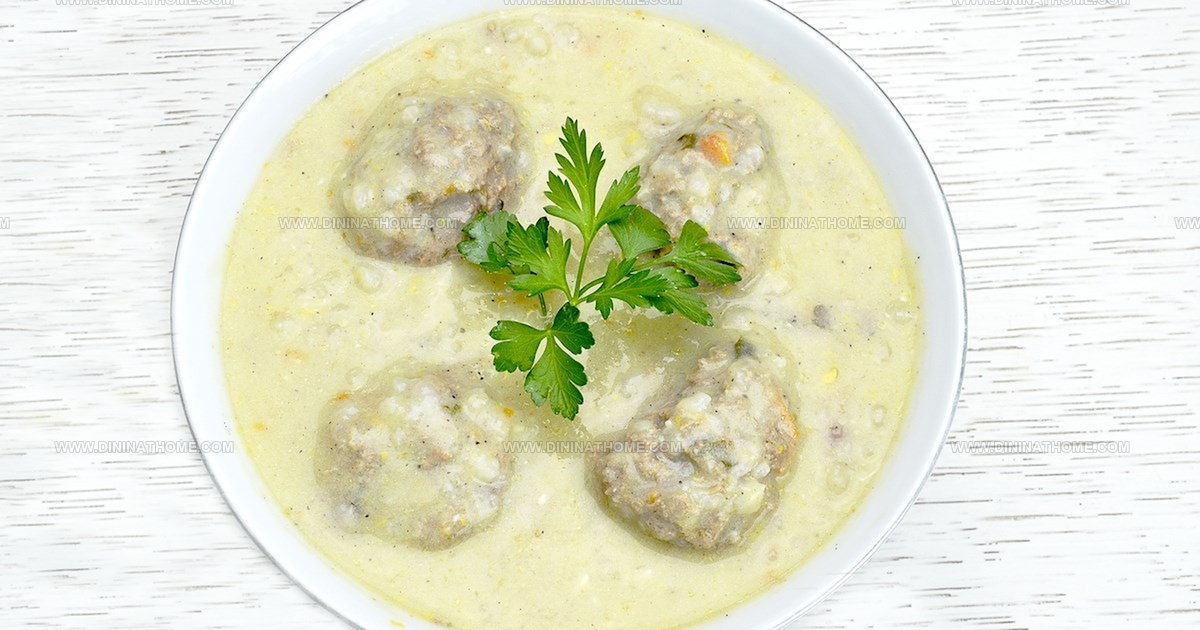
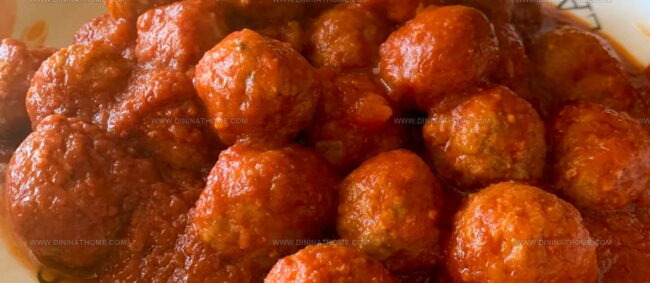
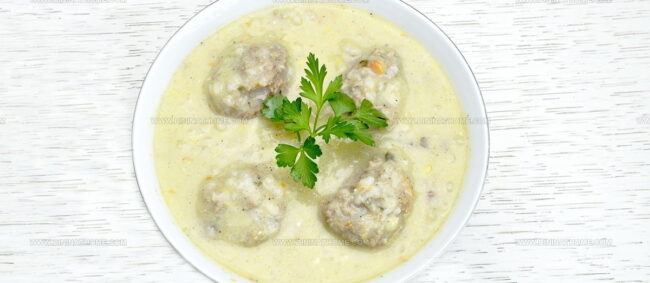
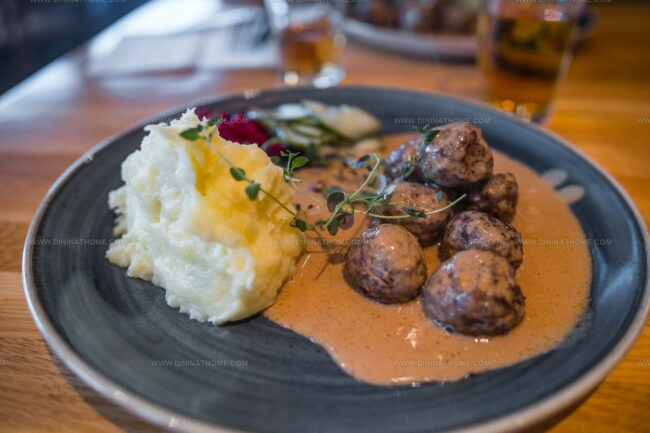
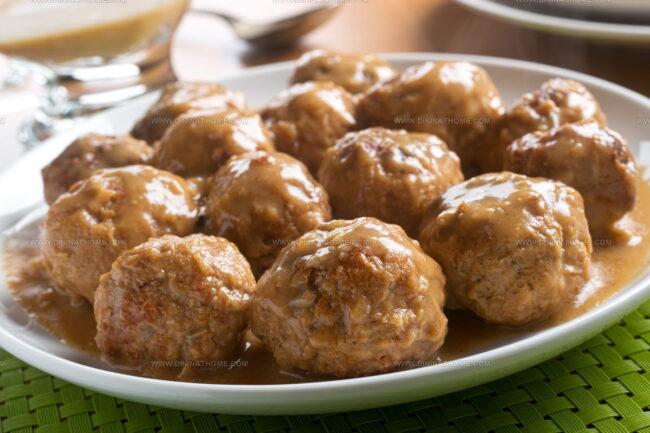
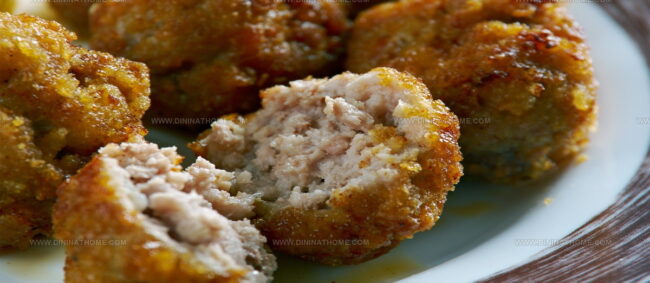
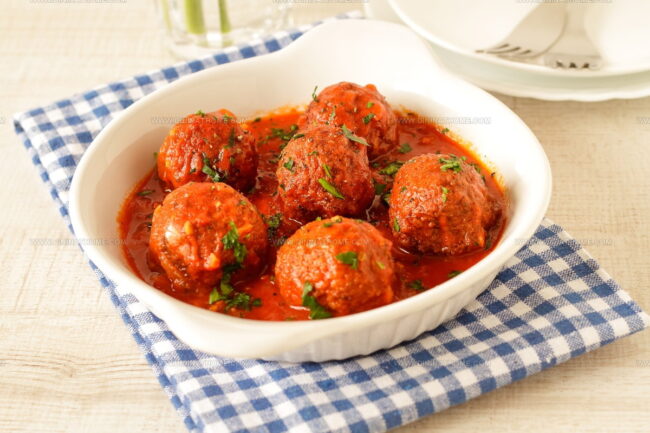
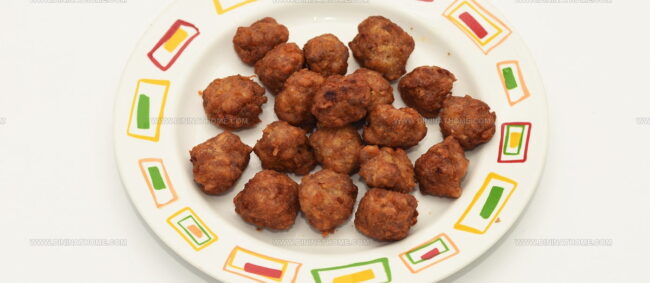
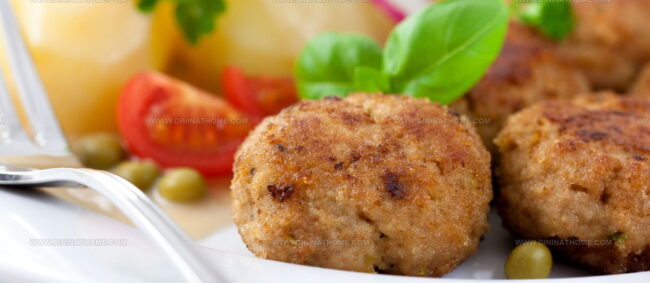
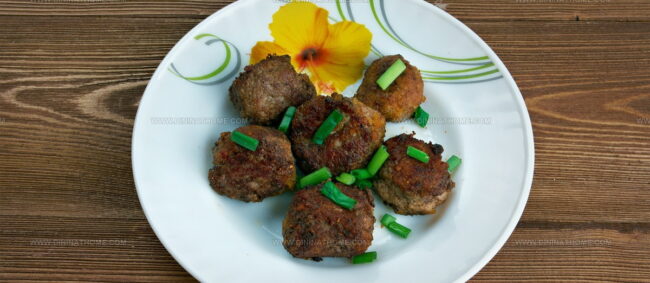
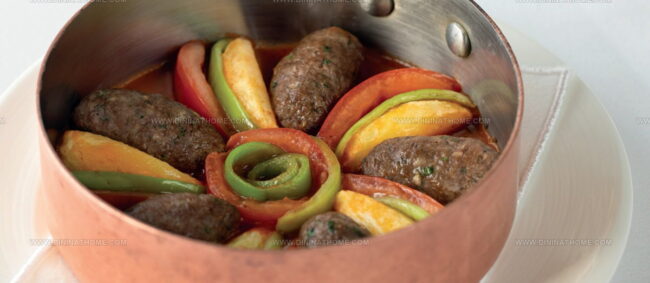
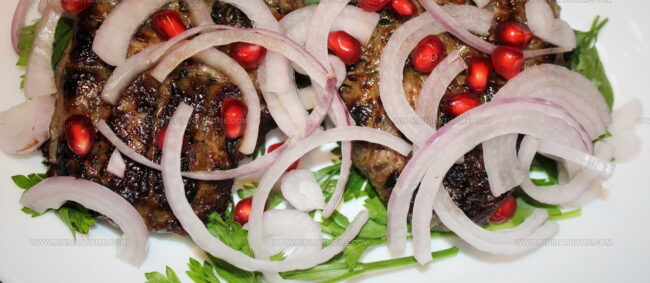
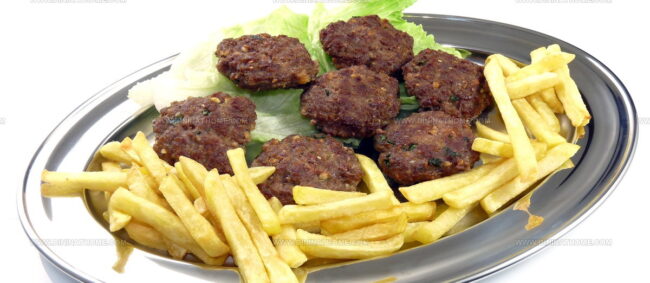
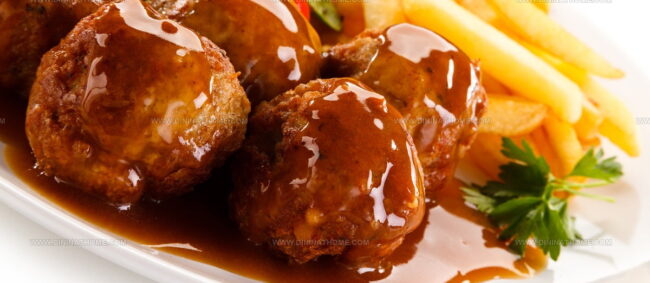
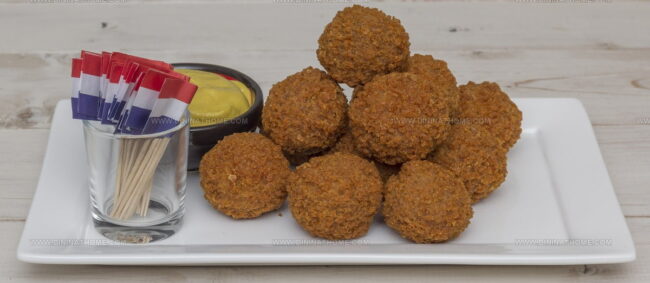
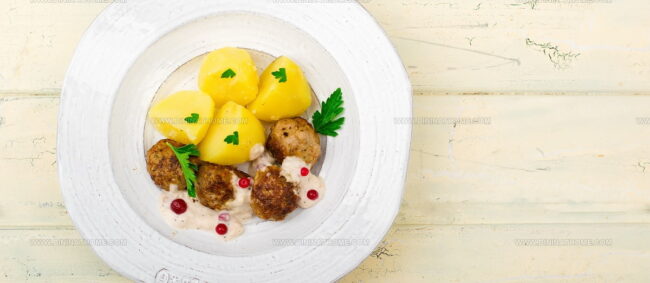
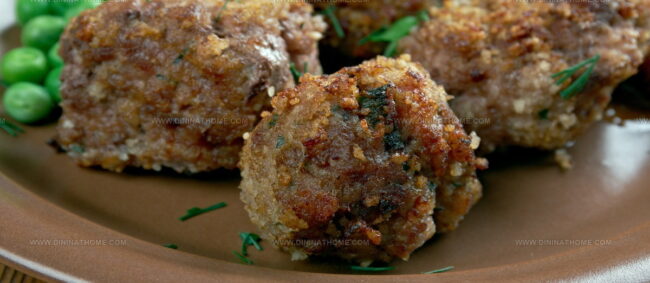
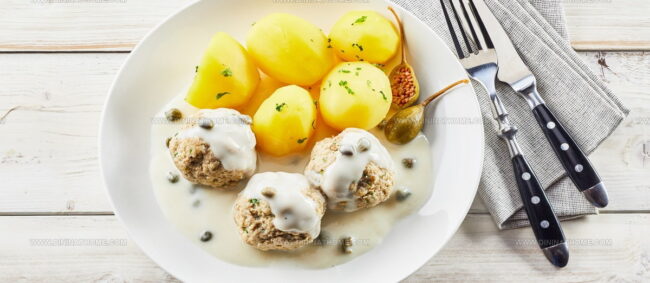
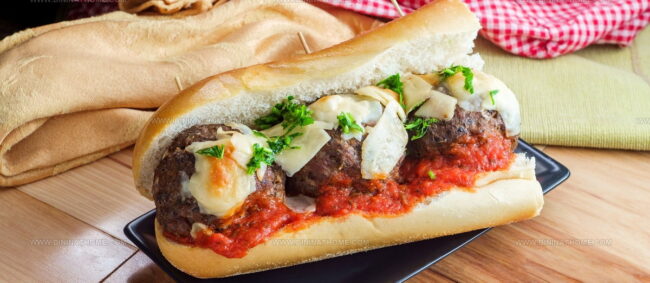
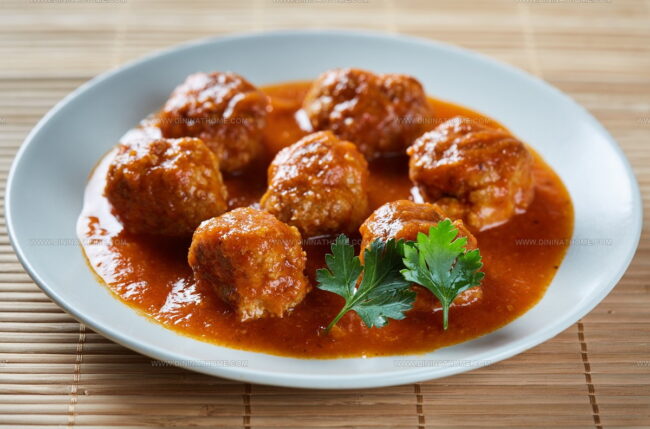
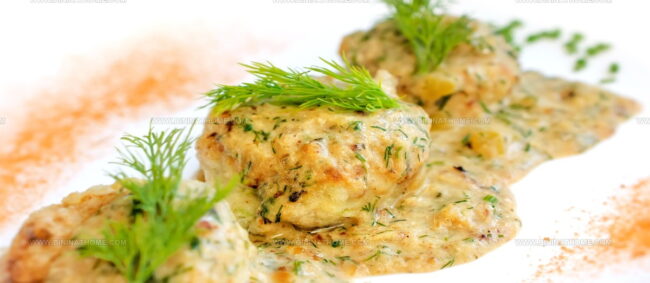
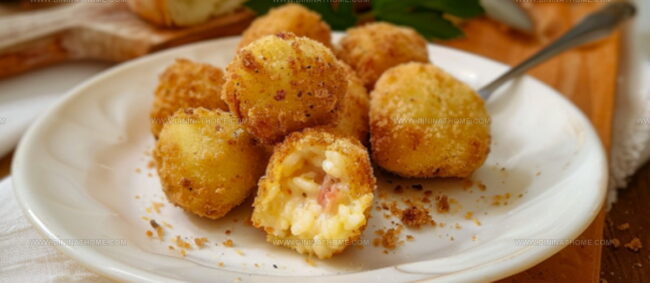
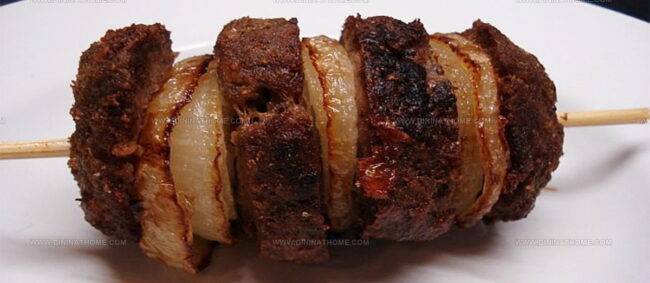
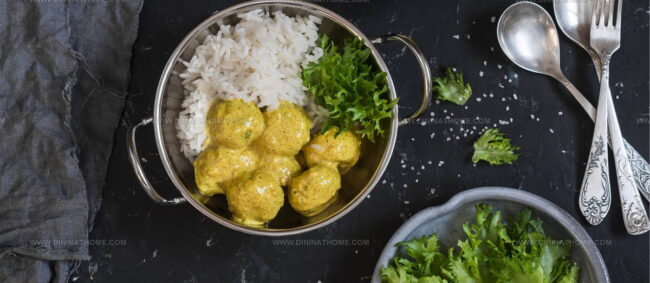
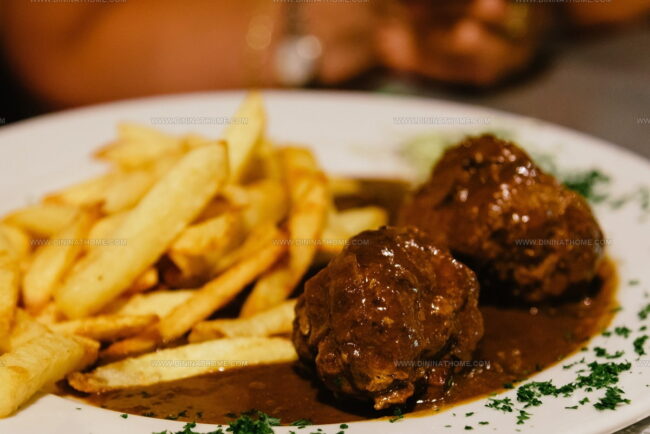
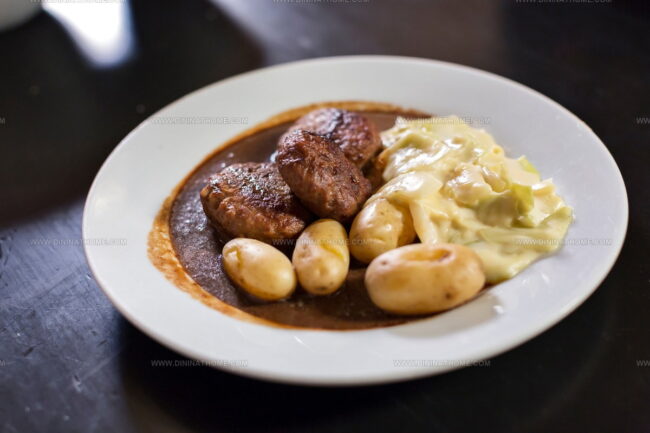
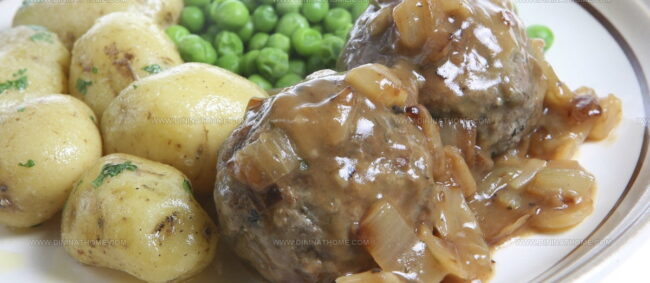
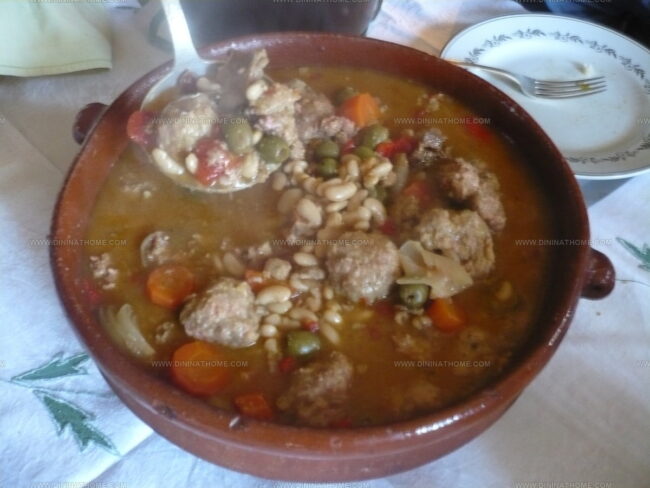
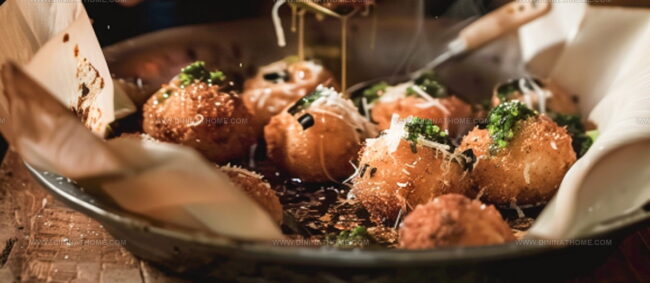
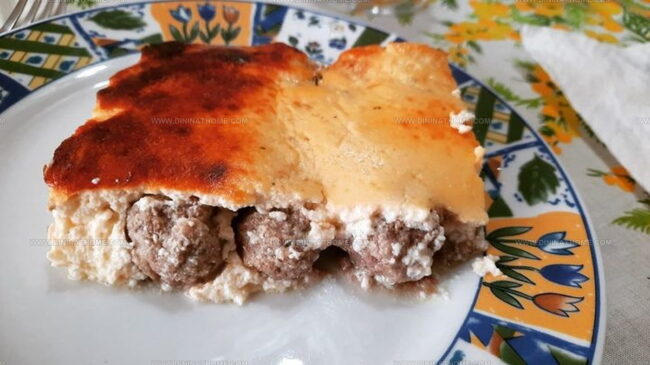
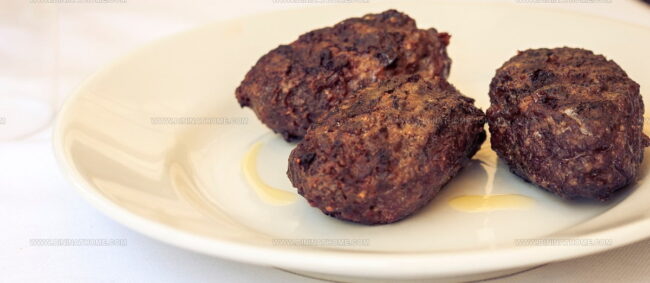
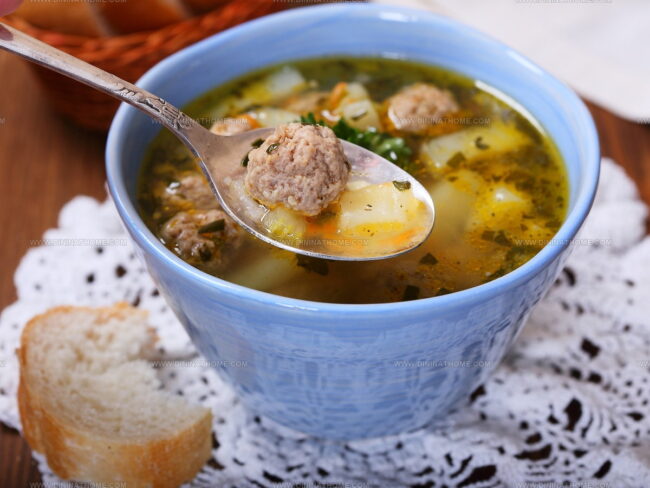
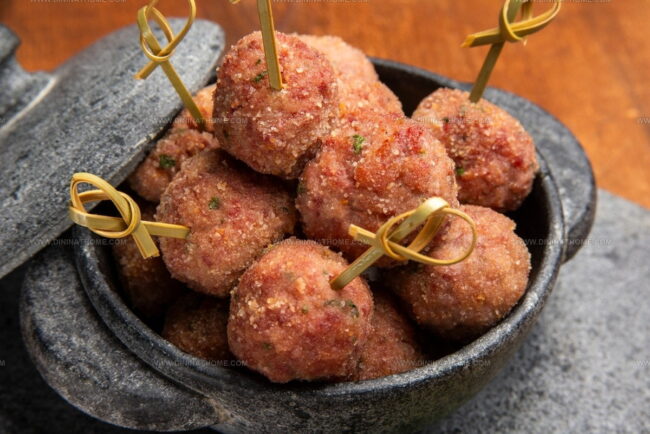
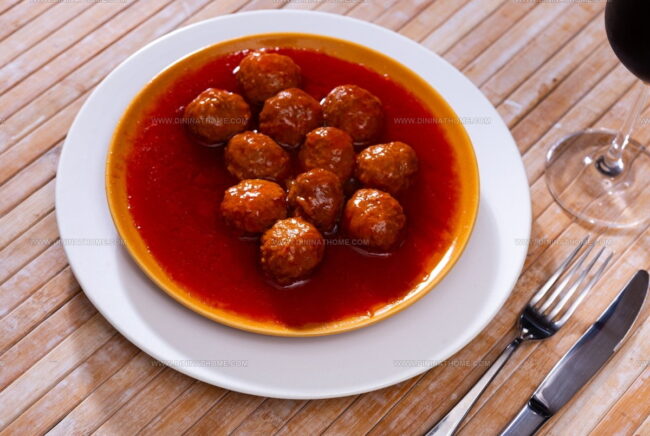
Emily Harper
Nutrition Consultant & Recipe Analyst
Expertise
Healthy Recipe Modification, Nutritional Analysis & Meal Planning, Global Cuisine & Dietary Adaptations
Education
School: French Pastry School, Chicago, IL
Program: L’Art de la Pâtisserie
Focus: Intensive training in traditional French pastry techniques, baking theory, and confectionery arts.
Emily’s journey started in a pastry kitchen but took a detour into the world of health and flavor science.
Graduating from the French Pastry School and studying nutrition opened her eyes to a new mission: making healthy food taste like something you’d actually crave.
At Dining At Home, Emily’s the go-to for smart, feel-good recipes that don’t trade flavor for nutrition.
She’s all about adding a fresh spin on old favorites and finding small ways to make everyday meals a little brighter.
Outside of the kitchen, Emily is most at home walking forest trails, testing plant-based recipes, or sharing a picnic under a wide-open sky.